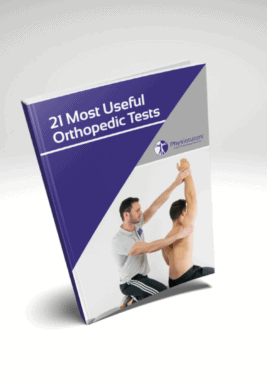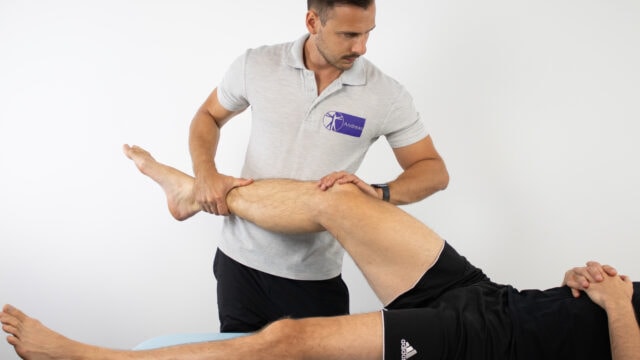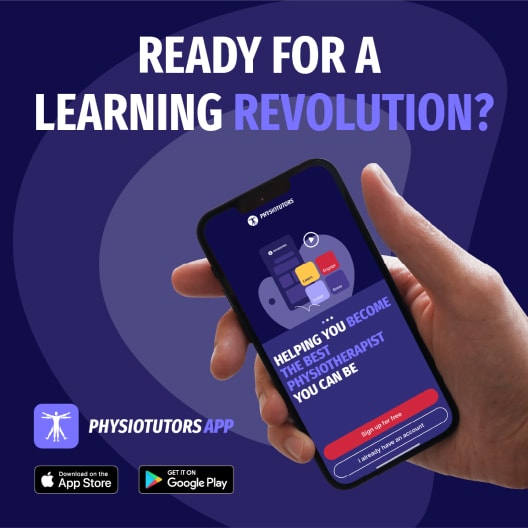Learn
Losee Test | Anterior Cruciate Ligament Tear
The pivot shift phenomenon is typical for ACL-deficient knees. Losee in 1978 described a maneuver similar to the pivot shift test we have already filmed here on Physiotutors. However, this test variation has not undergone formal diagnostic accuracy assessment and its clinical value thus remains questionable.
To conduct the test according to the description by Losee et al. (1978), the patient lies in supine position. When assessing the left knee, the examiner stands at the side to be examined. The patient’s leg is then grabbed with the left hand supporting the patient’s left foot and ankle and held in external rotation. The leg can be braced against your abdomen. The leg is then pushed into 30° of flexion with the left hand to allow the hamstrings to relax. External rotation of the leg ensures a reduction of the subluxation at the beginning of the test.
Place your right hand on the patient’s knee so that the thumb hooks behind the head of the fibula. Add valgus stress by pulling the foot laterally and adding medial force with your right hand.
While you maintain the valgus torque, slowly extend the leg allowing it to move into internal rotation. Also, push the head of the fibula forward with the thumb of your right hand.
A positive test is indicated by anterior subluxation of the patient’s knee and the patient recalls this movement as the feeling of instability they experience.
21 OF THE MOST USEFUL ORTHOPAEDIC TESTS IN CLINICAL PRACTICE

Other common tests to assess for an ACL tear are:
References
Like what you’re learning?
BUY THE FULL PHYSIOTUTORS ASSESSMENT BOOK
- 600+ Pages e-Book
- Interactive Content (Direct Video Demonstration, PubMed articles)
- Statistical Values for all Special Tests from the latest research
- Available in 🇬🇧 🇩🇪 🇫🇷 🇪🇸 🇮🇹 🇵🇹 🇹🇷
- And much more!








